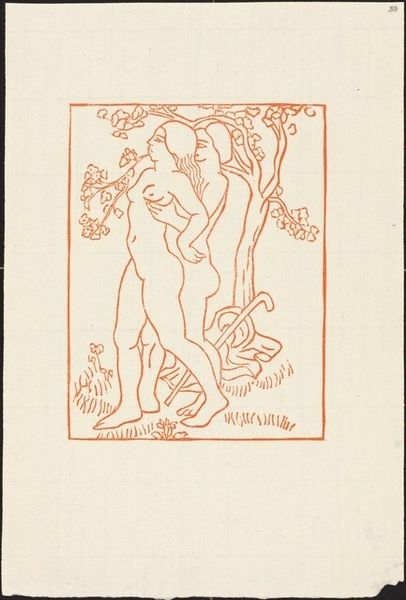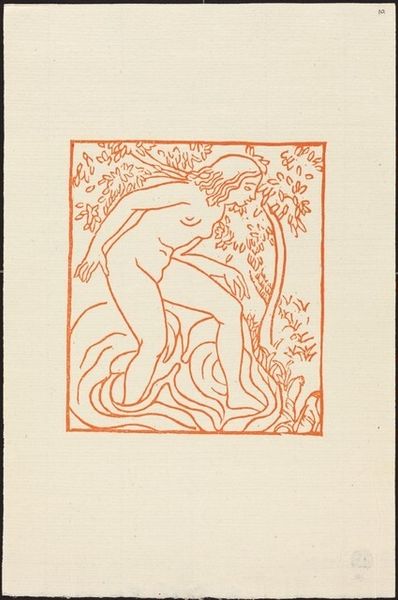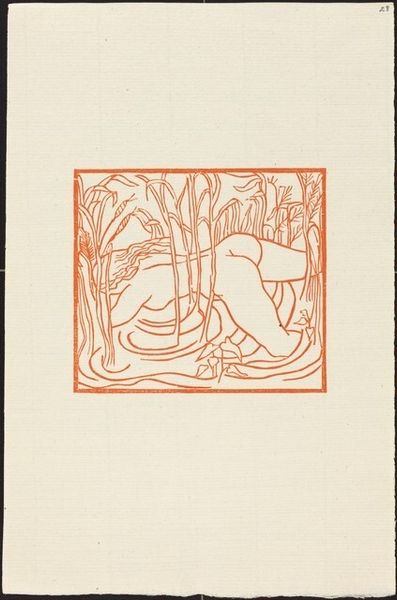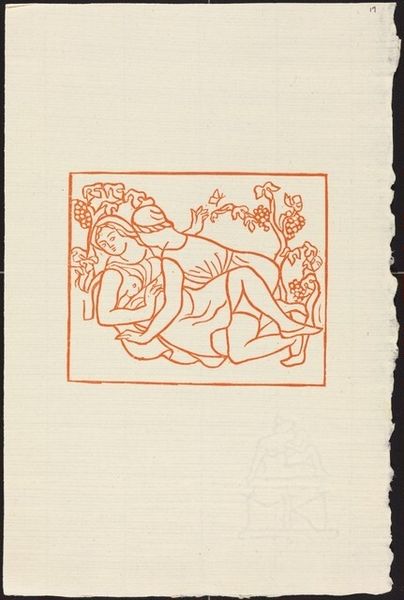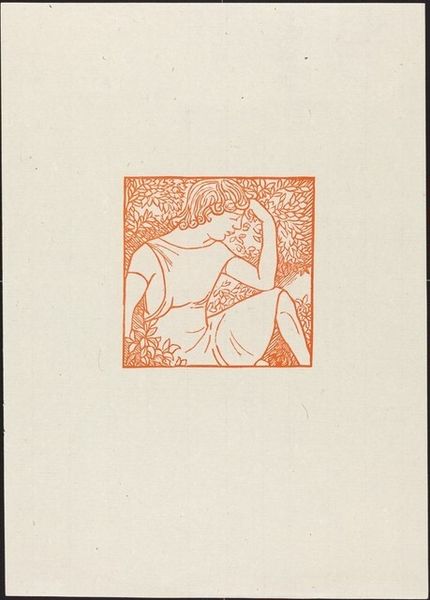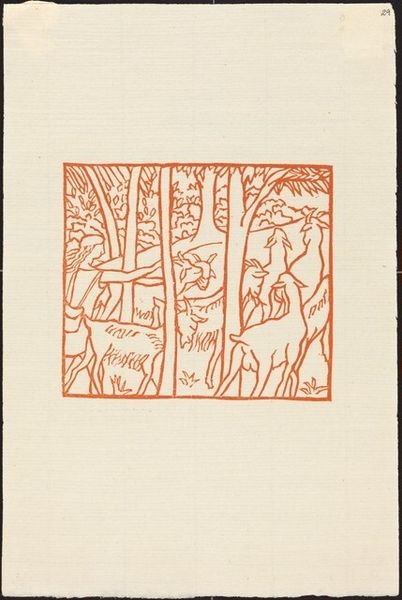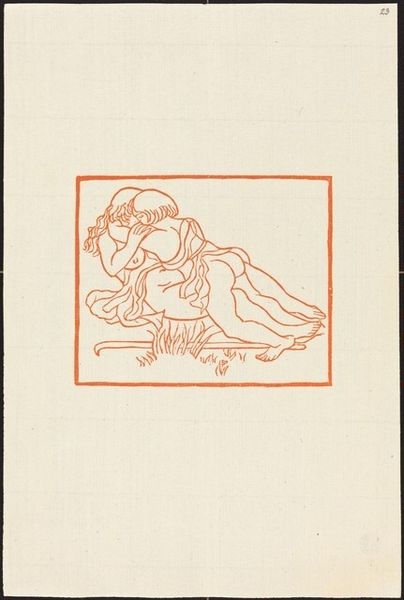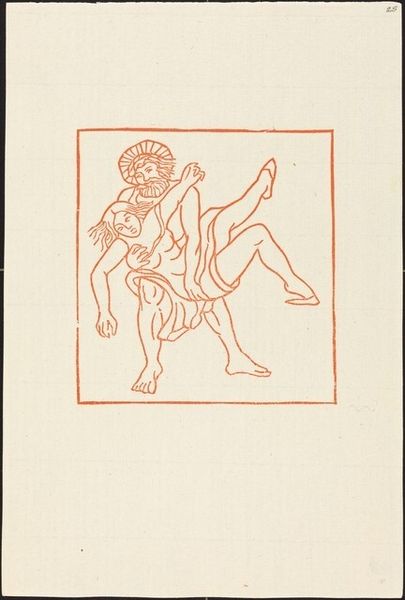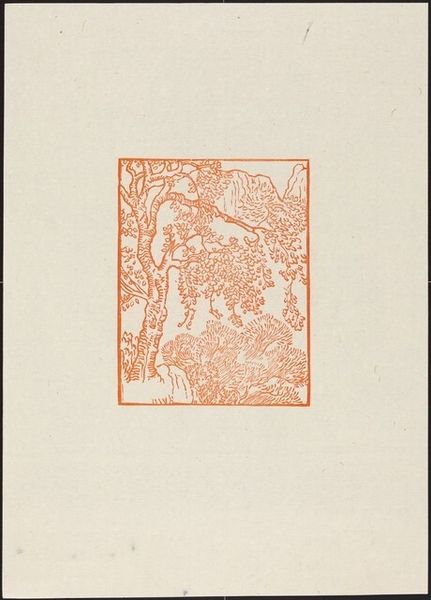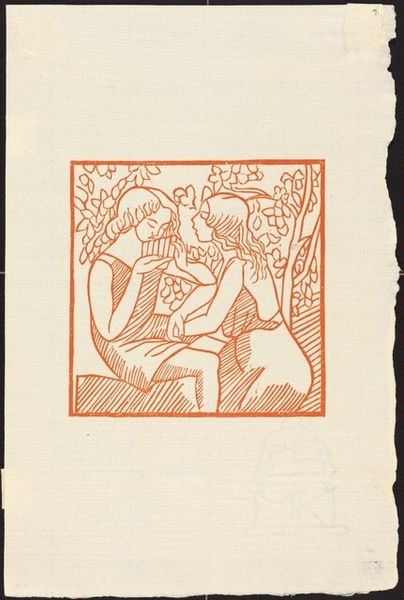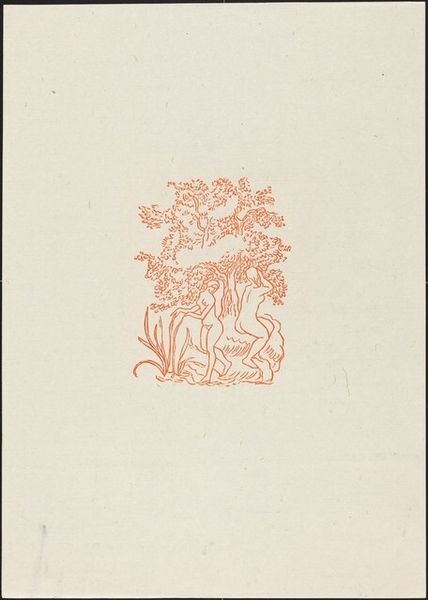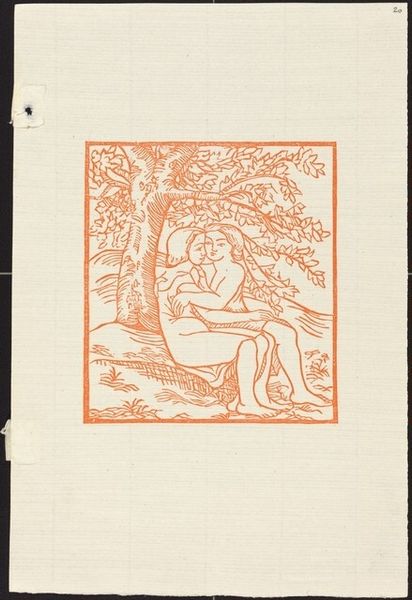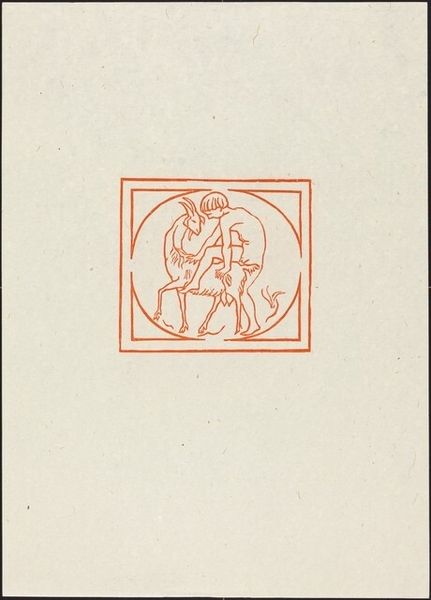
First Book: Chloe Washing Daphnis in the Cave of the Nymphs (Chloe lave Daphnis dansla caverne des nymphes) Possibly 1937
0:00
0:00
# print
#
old engraving style
#
landscape
#
figuration
#
line
#
genre-painting
#
coloring book page
Copyright: National Gallery of Art: CC0 1.0
Curator: This is "First Book: Chloe Washing Daphnis in the Cave of the Nymphs" by Aristide Maillol, possibly from 1937, a print. Editor: It’s deceptively simple at first glance. A sort of pastoral scene, sketched with such economical lines. The figures seem almost to emerge organically from the surrounding landscape, all in this rather charming, monochromatic tone. Curator: Maillol was very interested in the processes involved in book illustration. In this print, notice the simplification of form. It resembles more the function of the print media itself to make images accessible to larger audience and easier distribution of the art. The medium facilitates consumption. Editor: Absolutely. And consider the title itself, referencing Daphnis and Chloe, these figures are part of this larger historical conversation of heteronormative love, almost bordering on voyeurism, a tension that arises simply by framing a domestic scene. Curator: It’s true that he engaged in a classical dialogue through the nude figure but he uses lines very minimally—quite consciously referencing much older block-printed book illustrations, to focus on production of visual culture to become reproducible. The print technique employed lends a clean, almost clinical, aesthetic. It almost begs the question: who are the consumers of such scenes and materials? Editor: Which, when viewed from our present-day position, begs the question about consent, vulnerability, and power dynamics, particularly when you delve into the tales of Daphnis and Chloe as one of a very gendered power dynamic. This wasn’t created in a vacuum; there’s the context of his time, too. Maillol operated within very fraught historical times as it relates to social inequality and male voyeurism. Curator: Precisely. That intersection really gets us to think about how images become commodified, transformed for widespread access, losing in the process, the nuanced layers of production. Editor: Overall, looking at "Chloe Washing Daphnis" is less a celebration of bucolic peace, and instead opens up multiple readings relating gender, class, labor—and even spectatorship, when viewed from a historical lens. Curator: Agreed, it brings to surface production values of this print. Editor: Absolutely, it makes me eager to reflect about these scenes, and the figures involved with them from new point of view.
Comments
No comments
Be the first to comment and join the conversation on the ultimate creative platform.
